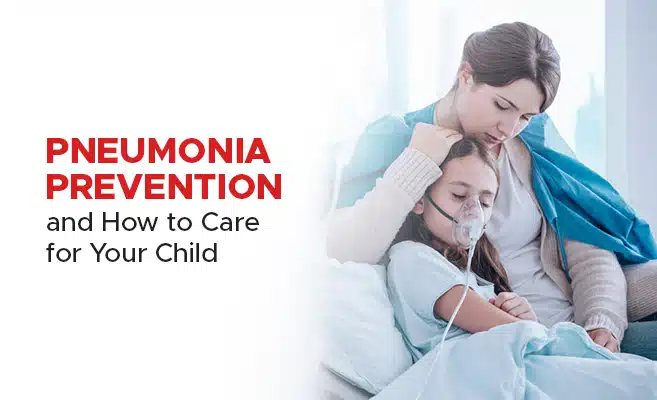
DiYES International School – Pneumonia is a leading cause of death among children worldwide, yet it is preventable with the right measures. The disease affects the lungs, causing inflammation that leads to difficulty in breathing, cough, fever, and chest pain. Infants and young children are particularly vulnerable, and without timely intervention, pneumonia can be fatal. As a parent or caregiver, understanding pneumonia prevention is essential to protecting your child’s health.
Pneumonia is an infection that affects the lungs, causing inflammation and making it hard to breathe. It can be caused by bacteria, viruses, or fungi. In children, the most common culprits are respiratory infections like the flu, the common cold, or more serious infections like respiratory syncytial virus (RSV) or bacterial pneumonia caused by Streptococcus pneumoniae. Pneumonia can spread through coughing, sneezing, or touching contaminated surfaces.
“Read about: Rising Pediatric Dialysis Cases: What Are the Causes Behind the Spike?”
Children, especially those under the age of five, are at higher risk for pneumonia due to their developing immune systems. Other factors that contribute to vulnerability include malnutrition, lack of access to healthcare, and exposure to environmental risks such as indoor air pollution or secondhand smoke. Pre-existing health conditions, such as asthma or HIV, also increase the chances of developing pneumonia.
One of the most effective ways to prevent pneumonia in children is through vaccination. The pneumococcal vaccine protects against pneumonia caused by Streptococcus pneumoniae, a leading bacterial cause of the disease. The vaccine is part of routine childhood immunizations and is typically given to children at two, four, and six months of age. The flu vaccine is also crucial in preventing viral pneumonia caused by the influenza virus, and it should be given annually to children.
In addition, the Haemophilus influenzae type b (Hib) vaccine helps prevent pneumonia caused by the Hib bacteria. These vaccines can significantly reduce the incidence of pneumonia in children, especially in areas with high rates of infection.
Teaching children good hygiene practices is another important strategy for preventing pneumonia. Regular handwashing with soap and water can help stop the spread of bacteria and viruses that cause respiratory infections. Ensure that your child washes their hands before eating, after using the bathroom, and after coughing or sneezing.
Additionally, cover your child’s nose and mouth with a tissue or the inside of their elbow when they cough or sneeze. This can help reduce the spread of germs to others, minimizing the risk of infections in your household or community.
“Read more: Child Having a Tantrum in Public? Try These Helpful Tips”
A well-balanced diet plays a crucial role in boosting a child’s immune system, making it easier for their body to fight off infections. Ensure that your child eats a variety of fruits, vegetables, whole grains, proteins, and healthy fats to support their immune health.
Malnutrition, especially a lack of essential nutrients such as vitamin A and zinc, can weaken a child’s immune system, making them more susceptible to respiratory infections like pneumonia. Breastfeeding for infants is also recommended, as it provides essential antibodies that help protect against infections during the first months of life.
Protect your child from environmental factors that can increase the risk of pneumonia. Avoid exposing them to secondhand smoke, as it can damage the lungs and make children more prone to respiratory infections. Also, reduce exposure to indoor air pollution, such as fumes from cooking on traditional stoves, which can irritate the respiratory system.
If your child shows signs of a respiratory infection, such as a persistent cough, difficulty breathing, fever, or fatigue, seek medical attention promptly. Early treatment can prevent the infection from progressing into pneumonia. Additionally, ensure that your child completes any prescribed antibiotics or antiviral medications to reduce the chances of complications.